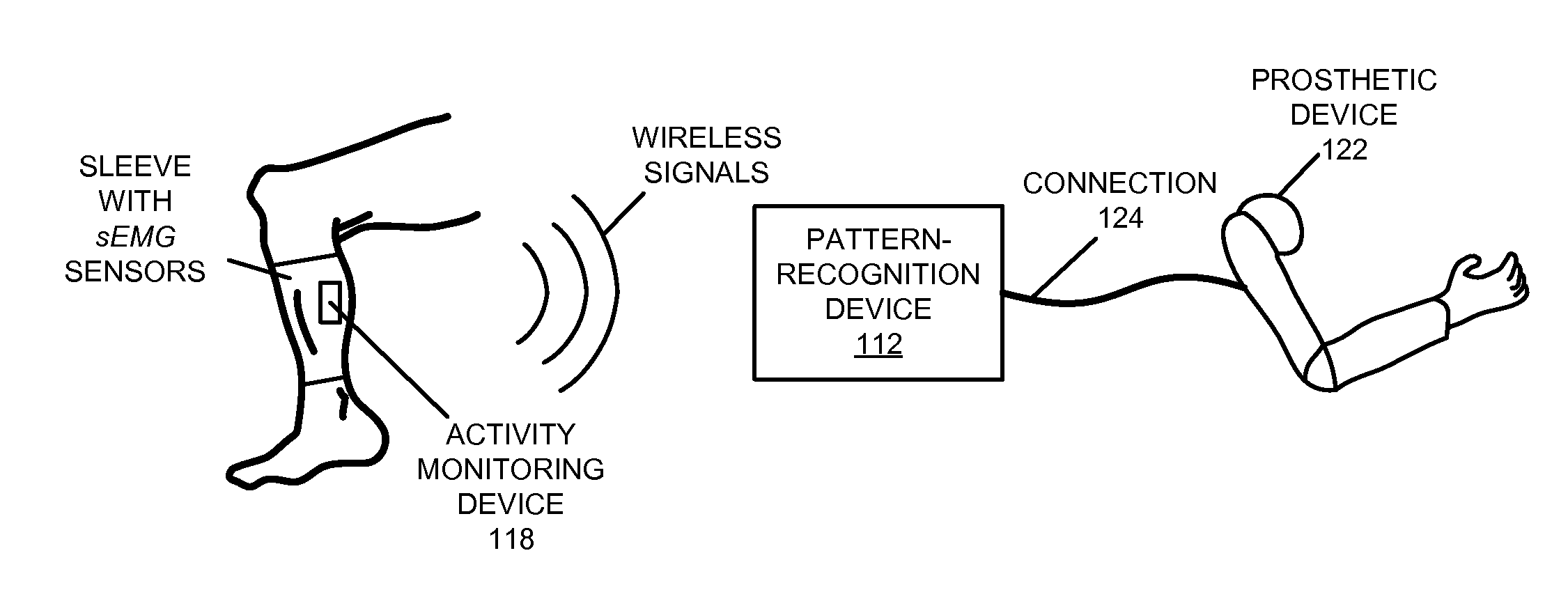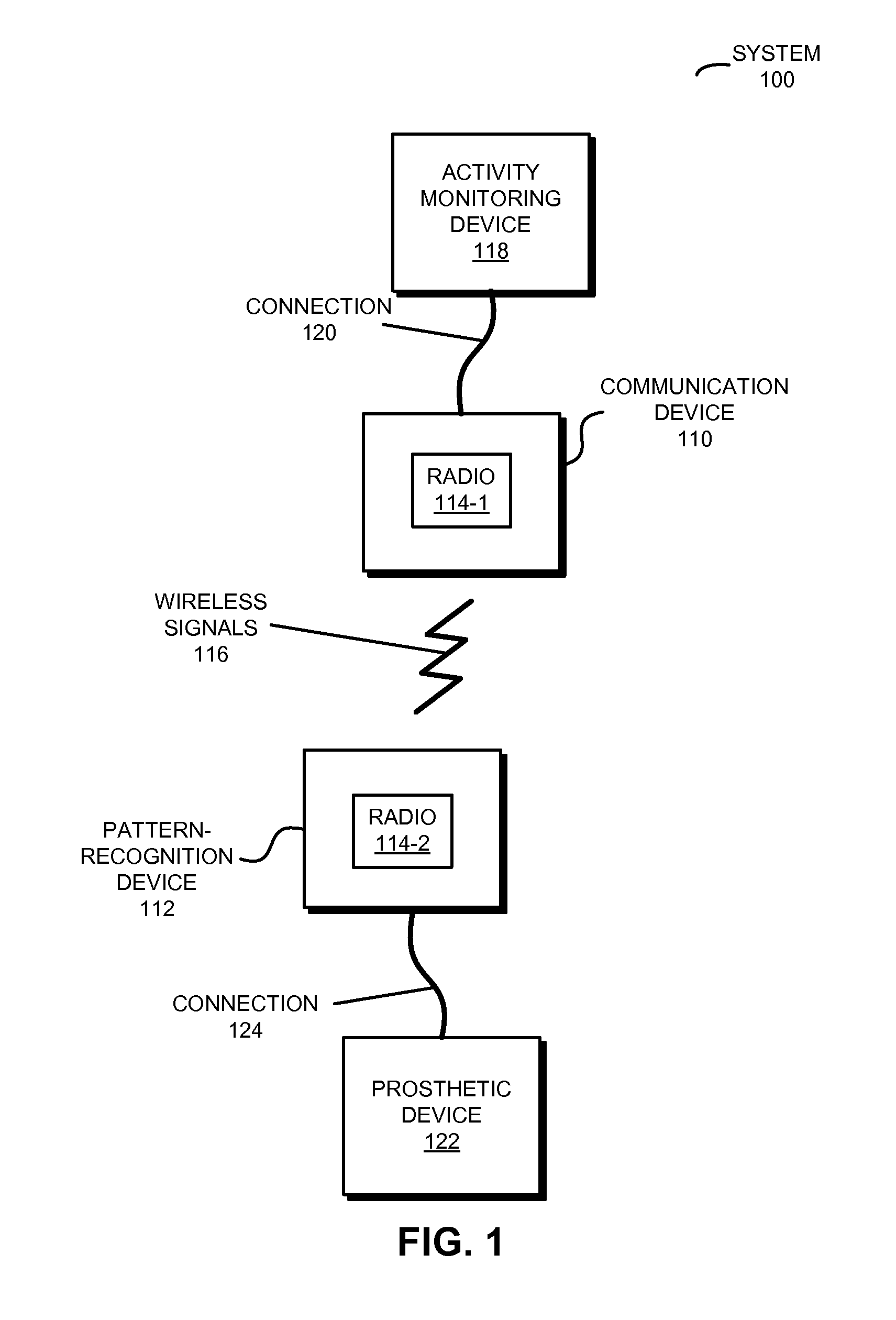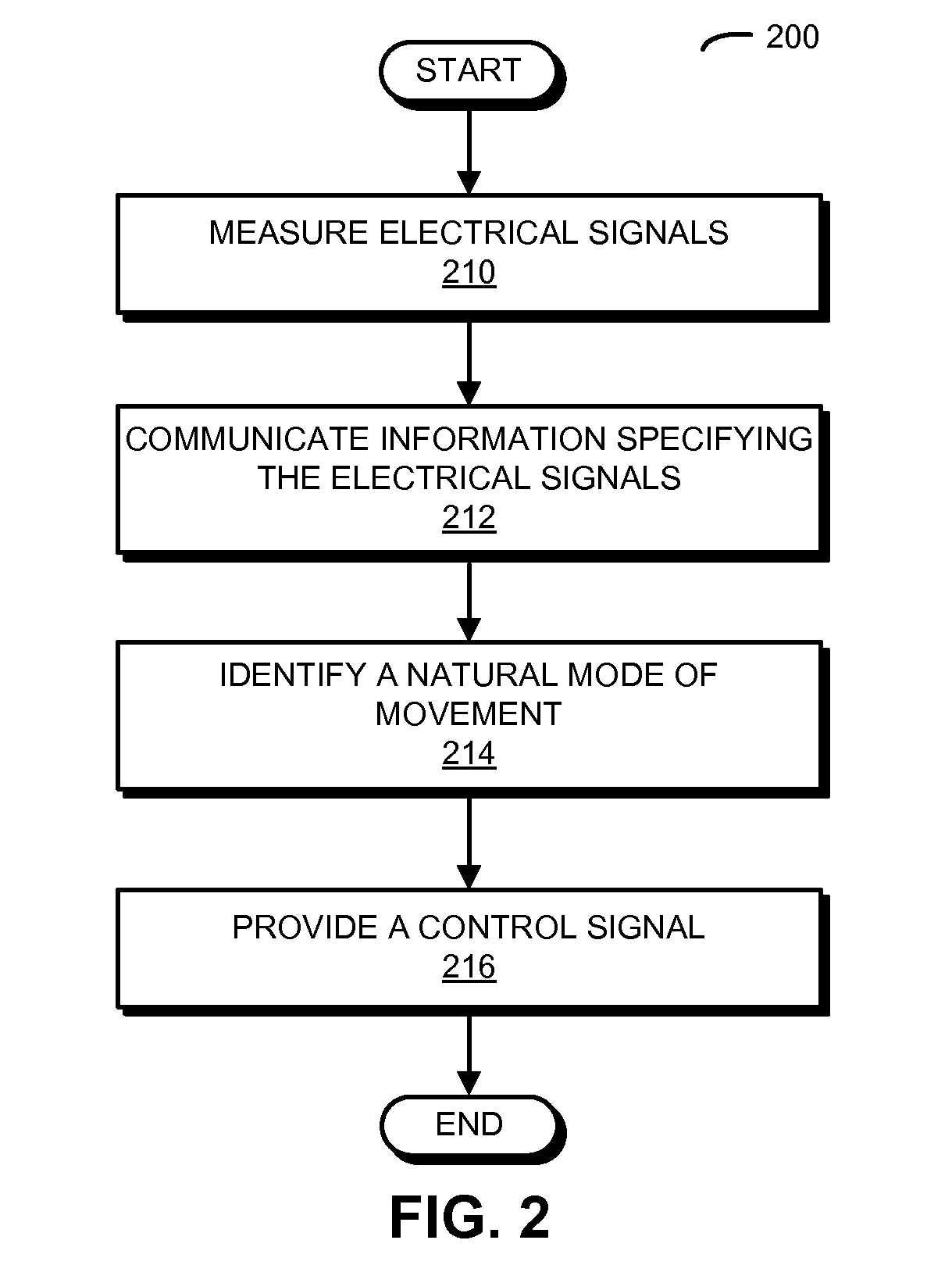Intuitive prosthetic interface
a prosthetic interface and intuitive technology, applied in the field of prosthetic devices and controls, can solve the problems of inability to use intuitive prosthetic control, increased functionality of prosthetic devices, and limited remaining muscles,
- Summary
- Abstract
- Description
- Claims
- Application Information
AI Technical Summary
Benefits of technology
Problems solved by technology
Method used
Image
Examples
Embodiment Construction
[0024]A prosthetic device is controlled by a system based on measured electrical signals corresponding to muscle activity in a lower-extremity anatomical analog to a dysfunctional or absent portion of an upper extremity of an individual. In particular, an activity monitoring device measures electrical signals corresponding to muscle activity in the lower-extremity anatomical analog. Then, a communication device communicates information specifying the electrical signals to a pattern-recognition device. The pattern-recognition device identifies a natural mode of movement of the lower-extremity anatomical analog based on the information. For example, the natural mode of movement may be identified using a pattern-recognition technique. Next, the pattern-recognition device provides a control signal to a prosthetic device associated with the dysfunctional or absent portion of the upper extremity, where the control signal specifies a natural mode of movement of the prosthetic device that i...
PUM
 Login to View More
Login to View More Abstract
Description
Claims
Application Information
 Login to View More
Login to View More - R&D
- Intellectual Property
- Life Sciences
- Materials
- Tech Scout
- Unparalleled Data Quality
- Higher Quality Content
- 60% Fewer Hallucinations
Browse by: Latest US Patents, China's latest patents, Technical Efficacy Thesaurus, Application Domain, Technology Topic, Popular Technical Reports.
© 2025 PatSnap. All rights reserved.Legal|Privacy policy|Modern Slavery Act Transparency Statement|Sitemap|About US| Contact US: help@patsnap.com



